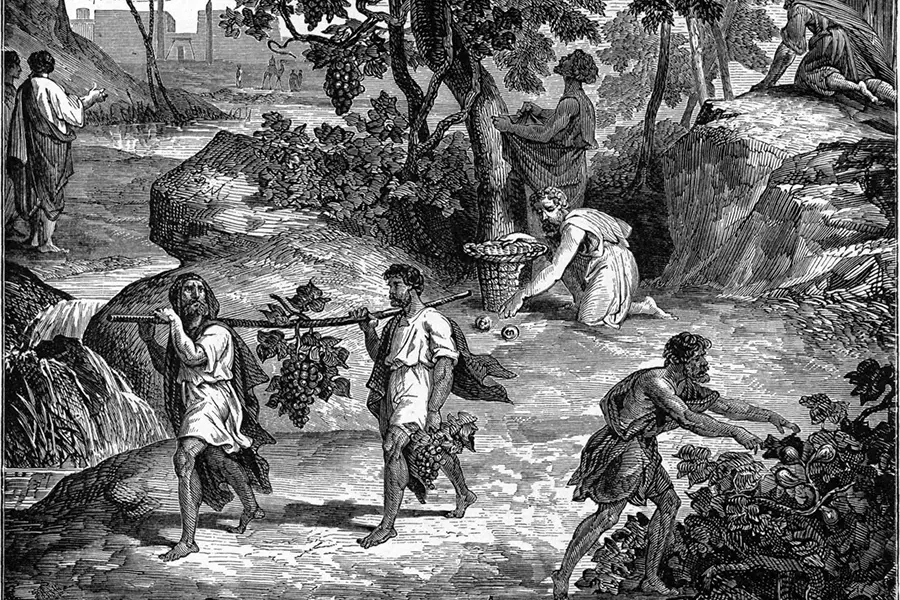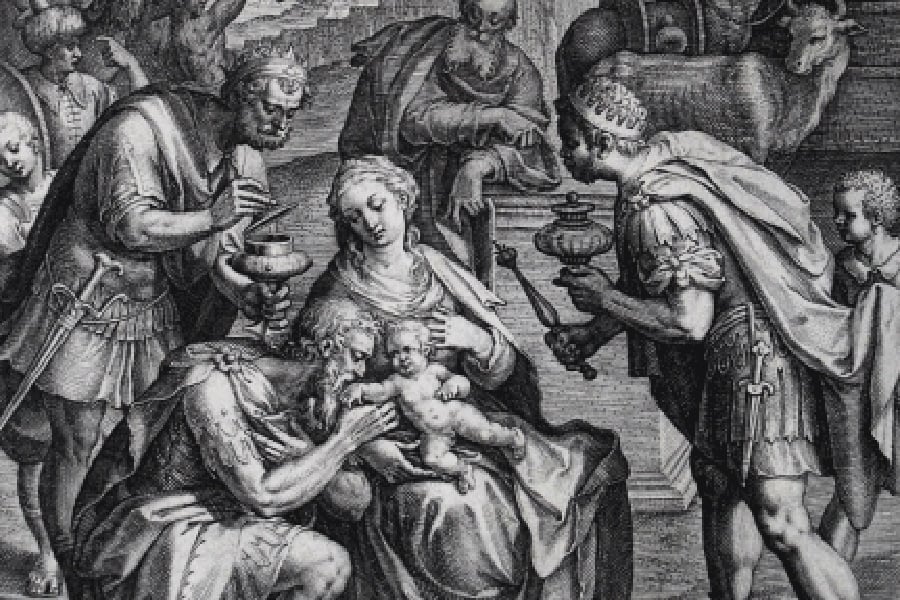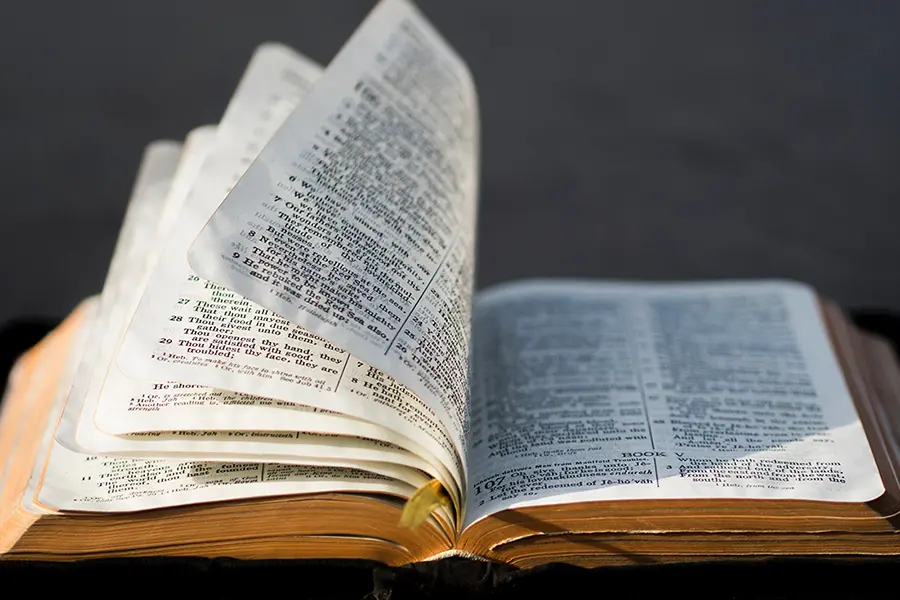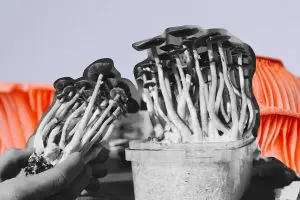Human civilization is impossible without plants. Not only are plants vital for food, shelter, and warmth, but their influence in trade, medicine, and spiritual practice predates the advent of society. Indeed, the need to control plants is what led to one of the greatest human inventions of all time—agriculture. Plants and civilization are so intimately connected that some scholars believe that the seeds of modern religion come from prehistoric relationships with psychoactive and medicinal plants. Indeed, every major spiritual text reserves some special plants for divine purposes, including the Holy Bible.
Plants in the Bible
Identifying the plants mentioned in the Bible is no easy task. Biblical scholars recognize up to 206 distinct plants in the Bible, with overarching agreement on 96 total plants. But, differences in translations, lost botanical history, evolving language, and changing climates make identifying particular plants challenging and a topic of much debate. Many translations of the Bible, for example, were not made directly from the Hebrew and Aramaic texts.
As such, some of the older translations, such as the popular King James translation, include passing references to plants that were not native to the ancient Holy Lands. Rather, these plants were perhaps more familiar to European readers. Additionally, the plants named in the Bible may feature different names from the same modern-day plants, making it difficult to figure out which plants the Holy book specifically references.
Psychoactive Plants in the Bible
Psychoactive plants come in more shapes, sizes, and varieties than you might expect. Not all plants produce the transformative visions that many come to expect from traditional hallucinogens. Hallucinogens, in fact, represent only a small portion of psychoactive plants. Others, like the coffee plant, act as stimulants. Some, like kava, inspire restful slumber. Others, like poppy, act as narcotics.
The psychological effects of most plants are subtle—a fact especially true about the medicinal plants mentioned in the Bible. The dawn of the biblical era represented a departure from the previous polytheistic traditions of ancient Egypt and Mesopotamia. These cultures more often blended herbal remedies with shamanistic “magic”, a practice that was often viewed negatively in the Old Testament.
Read: Beyond Mushrooms: The Mysterious, Magical World of African Plant Medicine
Followers of the Old Testament put faith in God as the divine healer, and disease—according to some scholars— was viewed as God’s will rather than ailments uniquely curable by man or by the plants themselves. As such, the majority of plants that are mentioned in the Bible are mentioned only in passing, not as part of a spiritual or healing practice. When specific healing or spiritual plants are mentioned, they are often tied to the Lord’s directive—such as in Exodus 30 when the Lord gives the proper recipe for anointing oil.
How to Grow Shrooms Bundle
Take Both of Our Courses and Save $90!
Still, even amidst this transition, some plants retained a special place in the new biblical society. In some cases, certain essential oils may have unintentionally inspired the optimal mood for worship. In others, a plant may not have been used expressly for its psychoactive properties but maintained some mystical relevance. In others still, plant oils may have been used to facilitate divine healing. Here are a few examples:
Grapes

Grapes may not be psychoactive in and of themselves, but they produce one of the most popular intoxicating brews on the planet: wine. Wine is featured predominantly throughout the bible as well as in other ancient Babylonian texts. Its uses were many: medicine, food, intoxicant, commerce, ceremony, among other things. Wine was also was one of the most important economic crops in the biblical era of the Old Testament.
In medical and spiritual practice, wine may not have been used alone. Archeological excavations in Israel upturned biblical-era wine jugs laced with residues of juniper, cinnamon, mint, cedar, Cyprus, and many other plants. Needless to say, wine and its various preparations were the most prominent and esteemed psychoactive concoctions in biblical history. Take this passage from the Talmud as an example: “It is only where there is no wine that drugs are necessary.” (Mas. Baba Bathra 58b)
Mandrake (Mandragora officinarum)
Mandrake is a plant with long-held mythology in cultures around the world. The plant is most famous for its human-like roots, but it’s also a powerful hallucinogen, sedative, and potentially deadly poison. Ingesting too much mandrake can cause death by asphyxiation, but it will also cause blurred vision, stumbling, vomiting, hyperactivity, and hallucinations. In Genesis 30, Rebecca, Jacob’s wife, uses mandrake root to address infertility. Although, she likely didn’t eat the plant.
Wormwood (Artemisia absinthium)
Wormwood is an ingredient once used to make the alcoholic drink absinthe, which is long associated with hallucinogenic properties. Although, the source of this hallucinogenic quality is highly debated. Most recently, analysis of old bottles of absinthe from 19th century Europe show that the drink contains 140-proof alcohol, which is substantially stronger than the 100-proof found in gins, vodkas, and whiskeys.
The plant also produces a unique chemical compound called thujone. In small doses, thujone is rumored to inspire high spirits and a good mood. But, more generally, thujone is considered a poison. In large doses, it can cause potentially life-threatening seizures. In the bible, the bitter herb is most often referred to as a poison, like in the passage from Jeremiah 9:15, “I will feed them, even this people, with wormwood, and give them water of gall to drink.” Other passages that mention wormwood include Proverbs 5:4 and Revelation 8:11.
Juniper (Juniperus)
Like wormwood, juniper also produces thujone, although not as much as wormwood or salvia, the popular modern-day hallucinogen. Berries from the juniper plant are historically used to make alcohol and still are today. Juniper is also used in some shamanic traditions, particularly by the Kalash culture in Pakistan. According to scholar and psychedelic historian Alan Piper, Kalash shamen’s burned juniper and ate juniper foliage as a part of spiritual ritual.
In the Bible, juniper is not eaten but is burned intentionally for its warmth. In the Old Testament, the Juniper tree is also referenced as a place of divine visitation. In Kings 19:5, Elijah sleeps under a Juniper tree when he is visited by an angel who relieves him of starvation. Depending on the translation, juniper is mentioned again in Isaiah 55:13. The tree, along with myrtle, is planted as an everlasting symbol of devotion to God.
Manna
Manna of the most difficult plant foods to identify in the Bible. In biblical texts, manna is referred to early in the Old Testament as a resin or residue from bread or grain. Numbers 11:7, for example, describes extracted manna as “like coriander seed and looked like resin.” Exodus 16:14-16, however, describes manna a little differently. In Exodus, manna is a frost-like substance developed after the dew evaporated:
And when the dew that lay was gone up, behold, upon the face of the wilderness there lay a small round thing, as small as the hoar frost on the ground.
Read: What Does ‘Entheogen’ Actually Mean?
After seeing this “small round thing,” Moses explains to the Children of Israel, “And Moses said unto them, This is the bread which the Lord hath given you to eat.”
Some modern scholars, primarily Danny Nemu, postulate that the holy reverence given to “manna” may come from the ergot fungus. The ergot fungus is a natural source of ergotamine, which scientist Albert Hoffman used to synthesize the powerful hallucinogen lysergic acid diethylamide (LSD). However, this view is not widely accepted among biblical scholars.
Frankincense (Boswellia sacra)
Frankincense is a beloved aromatic oil derived from the sap of the Boswellia sacra tree. The dried sap produces a yellow resin that’s home to a plethora of aromatic compounds. In the New Testament, this fragrant oil was Mary’s first gift from the three wise men. In later studies, researchers revealed that frankincense contains a compound called incensole acetate which, they articulate, may promote a euphoric experience during worship and boast antidepressant qualities. But, you don’t have to ingest frankincense to experience these qualities, it’s fragrance alone may be enough to inspire a mild psychotropic effect.

Myrrh (Commiphora)
Myrrh is an essential oil of the flowering Commiphora trees. Myrrh is mentioned several times in the Old and New Testaments alike. Perhaps most famously, myrrh was the second gift given to infant Jesus by the three wise men—gifts that were as good as gold at the time. Recent scientific analysis reveals why; myrrh contains aromatic molecules that may have pain-relieving effects. According to rodent research from the University of Florence, chemical compounds in myrrh may act on opioid receptors, which influence the body’s sensitivity to pain.
Poppy (Papaver rhoeas)
In the New Testament, Jesus refused a mixture of “wine and gall” during the crucifixion. Here’s where things get tricky; “gall” may refer to different plants or substances depending on the translation and context. In this case, some Bible scholars believe that “gall” refers to the poppy plant. Poppies are perhaps the most famous narcotic plants on the planet; they’re the source of opium, after all. In this case, some scholars interpret that Jesus was offered a mixture of sour wine and poppy as a sleep aid and pain reliever. But, this interpretation is up for debate.
Spikenard (Nardostachys jatamansi)
Spikenard, also called muskroot or nard, is one of the rare medicinal plants explicitly mentioned in the New Testament of the Holy Bible. Like many other biblical plants, however, muskroot is used as a fragrance and ceremonial incense, rather than ingested. As such, the active effects of the plant were delivered through inhalation and topical oils, instead of oral use. For example, in Mark 14:3, a woman anoints the head of Jesus with nard oil before he visits the home of Simon the Leper, perhaps to protect Jesus from the disease. In John 12:3, Mary anoints the feet of Jesus with the same oil.
How to Grow Shrooms Bundle
Take Both of Our Courses and Save $90!
Spikenard is a relative of the valerian root, which is a common homeopathic remedy for anxiety and stress. Spikenard is less studied than valerian root, but early rodent experiments suggest that it may boast some of the same anti-anxiety effects. Other early experiments discovered anti-inflammatory and antibacterial potential as well. A worthy biblical medicine, indeed.
Acacia (Acacia tortilis, Acacia lactea)
Acacia and the famous ayahuasca may have something in common: DMT. In the 1990s, scientists discovered that several species of acacia trees produce the enthenogenic alkaloid, dimethyltryptamine. This discovery inspired at least one biblical scholar to radically rethink common interpretations of the Old Testament. Benny Shanon, a professor of psychology of the Hebrew University of Jerusalem, hypothesizes that the hallucinogenic properties of the acacia tree, along with another regional plant, Syrian Rue, may have played a part in the story of Moses and the burning bush.
Cannabis
Cannabis is perhaps one of the more debatable plants that appears in the Old and New Testaments. The debate comes from the translation of one hyphenated Aramaic word: kaneh-bosm. Kaneh-bosm first appears in Exodus 30:23 when the Lord instructs Moses on how to make anointing oil for an incense altar, an altar dedicated to the Lord alone. The Lord instructs Moses to make the altar out of acacia wood, and anoint the altar with an oil containing myrrh, kaneh bosm, cinnamon, and other spices. Then, the Lord then gives of a holy incense that contains a variety of plants, including frankincense and galbanum.
The majority of scholars interpret “kaneh-bosm” to be “calamus,” but this translation is debated. In 1936 Sula Benet, a Polish etymologist, postulated that “cannabis” may be a more accurate translation. Cannabis, of course, is one of the most popular psychoactive plants in the world. It’s also one of the oldest agricultural crops, with a history of human use dating back 10,000 years. To this day, however, Benet’s translation hasn’t garnered mainstream popularity.

DoubleBlind is a trusted resource for news, evidence-based education, and reporting on psychedelics. We work with leading medical professionals, scientific researchers, journalists, mycologists, indigenous stewards, and cultural pioneers. Read about our editorial policy and fact-checking process here.

DoubleBlind Magazine does not encourage or condone any illegal activities, including but not limited to the use of illegal substances. We do not provide mental health, clinical, or medical services. We are not a substitute for medical, psychological, or psychiatric diagnosis, treatment, or advice. If you are in a crisis or if you or any other person may be in danger or experiencing a mental health emergency, immediately call 911 or your local emergency resources. If you are considering suicide, please call 988 to connect with the National Suicide Prevention Lifeline.



